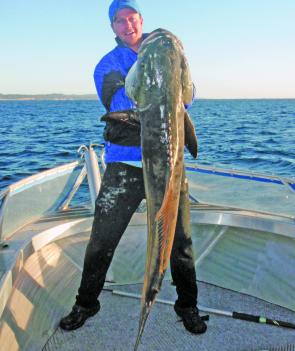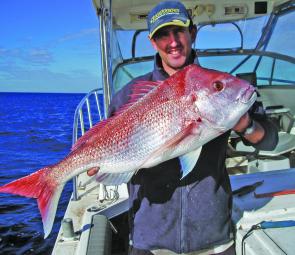Anything can turn up during spring in Moreton Bay. Depending on wind and currents, there can be summer pelagics a plenty one moment and then switch back to winter species the next.
The weather can also be a little fickle, so having an open mind for your fishing options can really pay off. Some of the species to look for this month include bream and flathead on the flats as well as cod, jacks and whiting in the canals and creeks.
In the open parts of the bay as well as on the shallow offshore reefs, snapper, longtails, school mackerel and cobia are all ideal targets.
Predators like longtails and cobia are present in Moreton Bay and on the close in reefs for much of the year; however, springtime is when many of the larger ones are caught.
The Southern Bay area, reefs like Harry Atkinsons, Mud Island, Peel Island and the Rous and Rainbow channels all hold bait aggregations that attract longtails.
These early season fish are not normally as prolific as in summer and autumn, but what they lack in numbers they make up in size, averaging between 15-20kg with fish up to 25kg not unusual.
They also don’t tend to ball up bait on the surface very often, and when they do, it is not usually for a long enough period to allow stalking them.
A better approach is to anchor up in the area you expect to find them and either float large baits or livies down a berley trail. Alternatively drift the same areas working soft plastics or flies slowly through the water column. While this is not as spectacular as casting at a feeding fish on the top, it certainly is effective at targeting these large tunas.
Cobia are not as common at the southern end of the bay, but they do turn up at similar locations to longtails.
The shallow offshore reefs around Moreton and Stradbroke hold better numbers of these enigmatic fish and they can be targeted with both baits and lures.
Large soft plastics and small metal jigs both work well as do vibration style lures. Zooms, Gulps, 7” Assassin Shads, Tranzams and Sebile Flatt Shads will all produce. When using jigs when fishing the shallow grounds, the Maria Metal Flickers and Seven Seas Revolvers are spot on.
Slow hopping the lures off the bottom while staying close to any bait aggregations that you can see on the sounder is a good way to go.
When bait fishing it can pay off to spend a little time getting a berley trail going, then you can feed down livies, dead baits and soft plastics to see what the fish are interested in taking on the day.
While longtails are not a dirty fighter, they are capable of some blistering long runs, so 30-50lb tackle is ideal. It’s also important to remember to keep drags smooth and have plenty of line capacity.
On the other hand cobia can be a really tough fighter over rough terrain so some seriously strong tackle may be required to subdue the big fish. Even 80lb tackle may not stop some of the big black torpedoes from reaching the bottom or the nearest channel marker.
But if the run of fish is much smaller, then considerably lighter tackle can be employed.
Apart from the big predators, there are plenty of smaller species to chase this month.
The warming estuary waters will encourage mangrove jacks and cod to become more aggressive and bream will be more willing to hit topwater presentations in the creeks and canals.
Start looking for these fish in the backwater areas of canals where there isn’t too much water movement, as the backwaters heat up faster than surrounding areas.
The place where the warm water meets main channels can be a productive focal point for fish action.
Until next month, tight lines!
If you would like more information about fishing the southern bay, just drop in and see us at Fish Head in the Victoria Point Town Centre (just across the car park from McDonalds) or drop an email to --e-mail address hidden--
Reads: 5295
Luke Cameron caught this whopping 30.8kg cobia off Moreton recently – these big predators will be the fish to target in October.

Great snapper like this are available in Moreton Bay this month.




